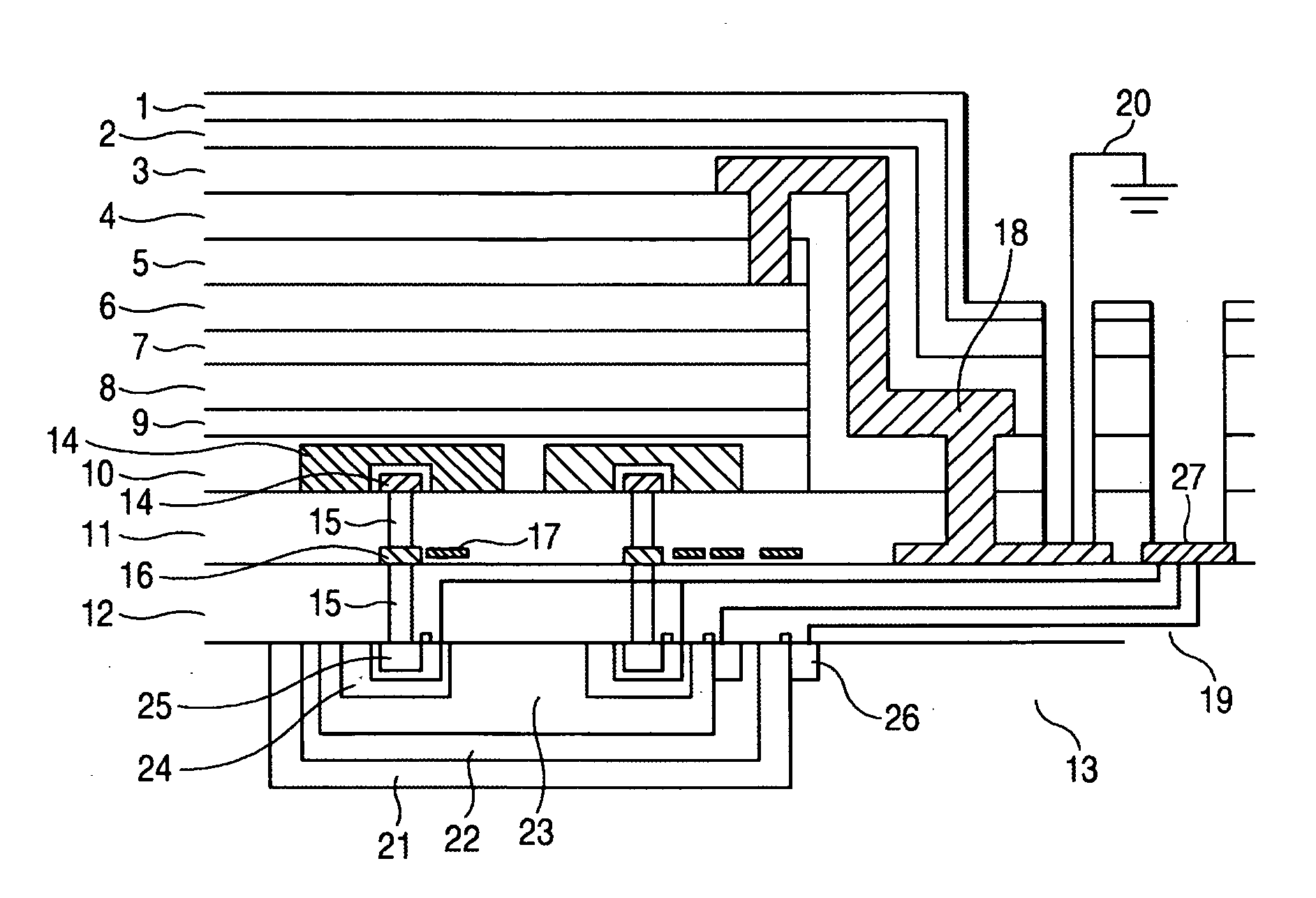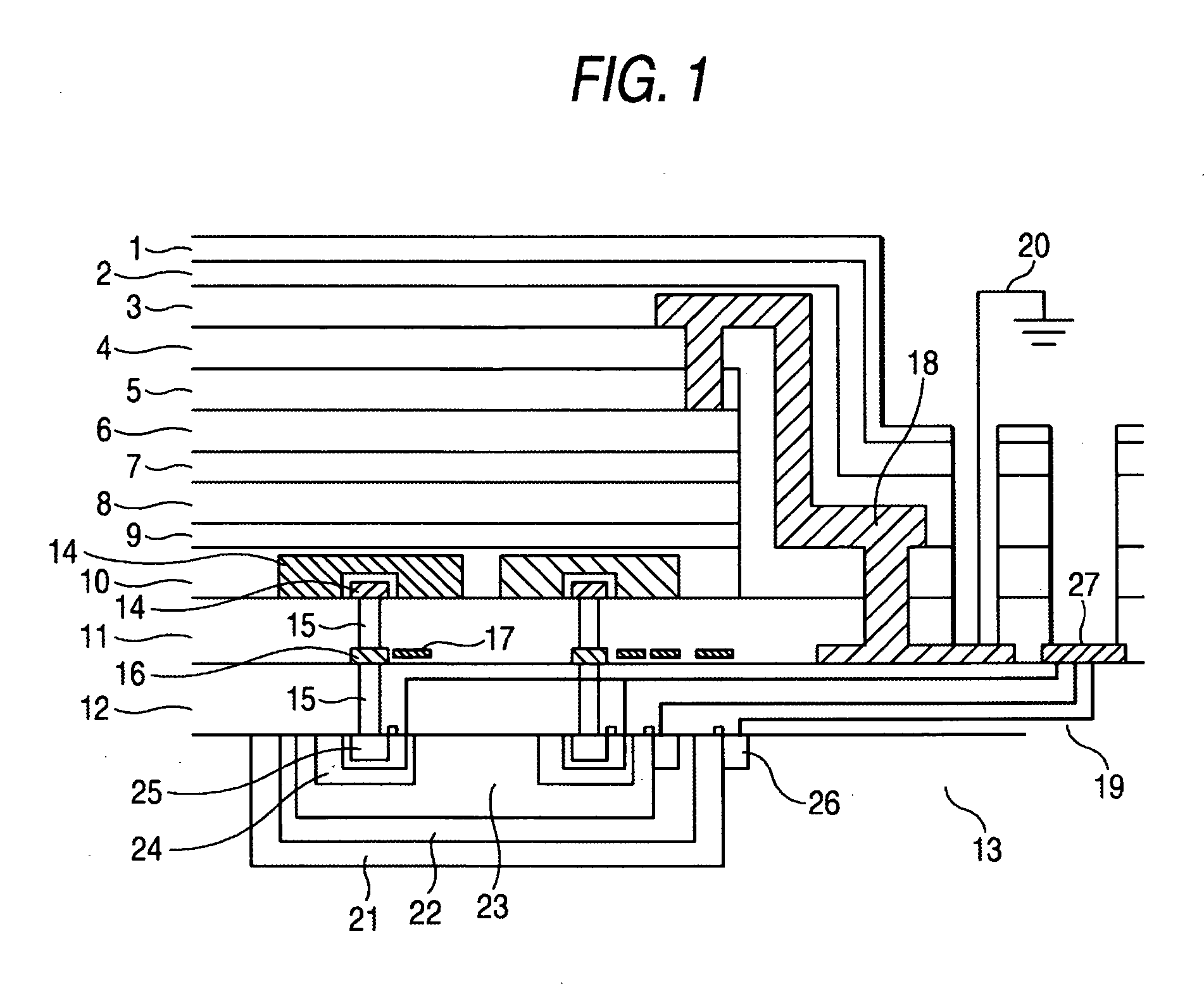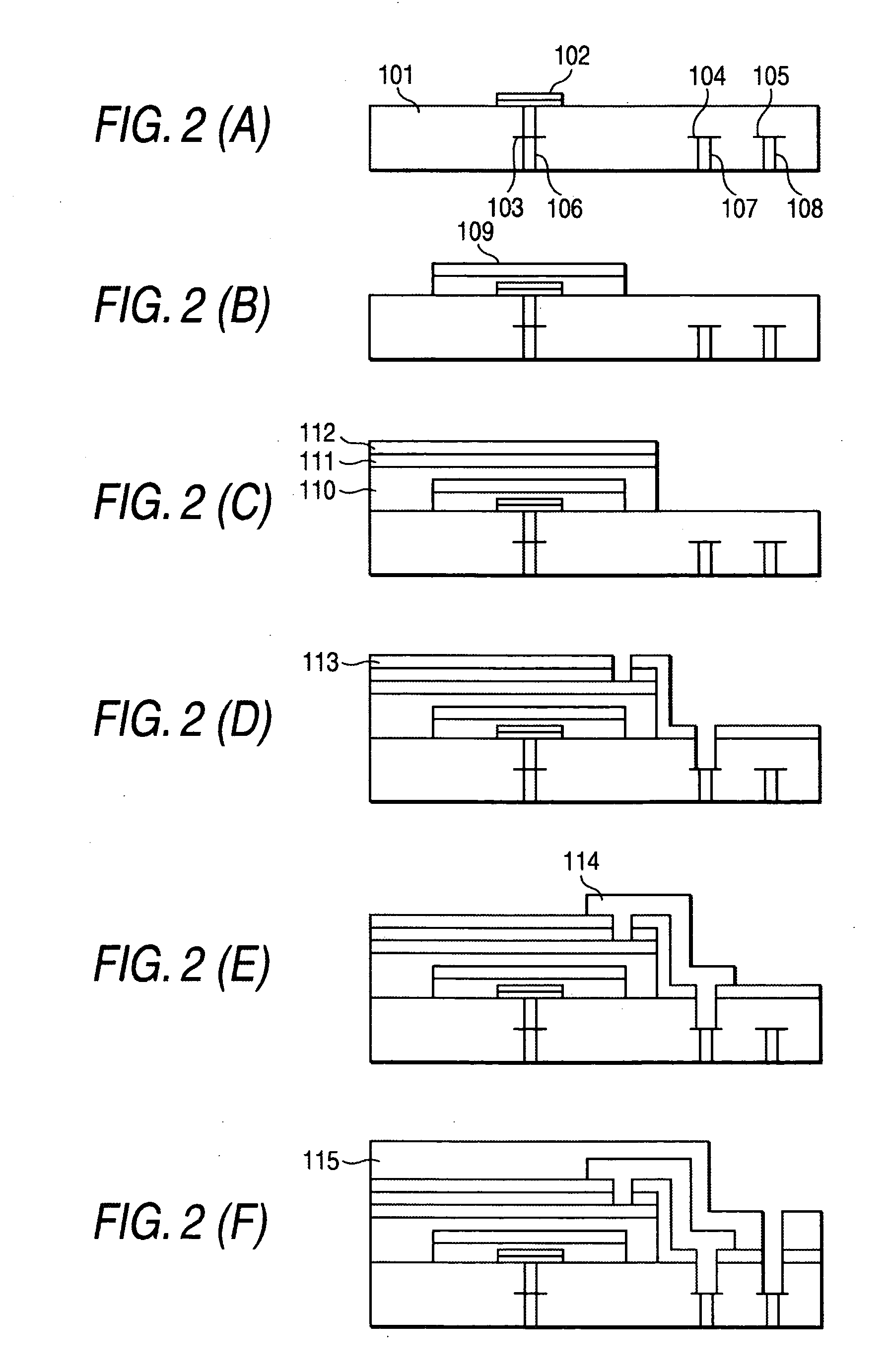Organic and inorganic hybrid photoelectric conversion device
a photoelectric conversion and hybrid technology, applied in the direction of electrical equipment, semiconductor devices, radio frequency controlled devices, etc., can solve the problems of low color reproducibility, low sn ratio, and inability to obtain high resolution, so as to improve color reproducibility and sn ratio
- Summary
- Abstract
- Description
- Claims
- Application Information
AI Technical Summary
Benefits of technology
Problems solved by technology
Method used
Image
Examples
example 1
[0143] Results showing the importance of the thickness of the insulating film between the organic photoelectric conversion film and the inorganic photoelectric conversion film are shown.
[0144] Devices were produced with a thickness of the organic photoelectric conversion film of 200 nm, a pixel electrode size of the organic photoelectric conversion film of 3 μm×3 μm, a thickness of the insulating film of 2 μm (invention), 6 μm (invention) or 10 μm (comparison), a thickness of the inorganic photoelectric conversion film of 200 nm, a pixel size of 3 μm×3 μm, a pitch width between pixels of 1 μm, and a uniform refractive index.
[0145] With the thickness of the insulating film of 2 μm, when the light flux applying a signal to the pixel of the organic photoelectric conversion film had an angle of about 30° from the photoelectric conversion film plane, a 100% signal was applied to the adjacent pixel of the inorganic photoelectric conversion film.
[0146] With the thickness of the insulati...
example 2
[0149] In the case where the same devices were produced by changing the pixel size of the inorganic photoelectric conversion film to 6 μm×6 μm while maintaining the pixel electrode size of the organic photoelectric conversion film to 3 μm×3 μm, even when the angle formed between the incident light flux applying a signal to the pixel of the organic photoelectric conversion film and the photoelectric conversion film plane is decreased with the same thickness of the insulating film, the signal can be applied to the same pixel of the inorganic photoelectric conversion film. It was understood that the inorganic photoelectric conversion film performed photoelectric conversion of blue light or red light in the depth direction thereof, and it was effective to the multilayer photoelectric conversion device that the number of pixels of the organic photoelectric conversion film for green light was larger than the number of pixels of the inorganic photoelectric conversion film for blue light an...
example 3
[0150] Results showing an improvement in S / N ratio in the multilayer structure of the organic photoelectric conversion film are shown.
[0151] A quartz substrate having a size of 2.5 cm square was cleaned under application of ultrasonic wave with acetone, Semicoclean (available from Furuuchi Co. Ltd.) and isopropyl alcohol (IPA) for 15 minutes each. After cleaning the substrate in boiling IPA finally, the substrate was subjected to UV / O3 cleaning. On the substrate, an ITO film was formed by sputtering to a thickness of 20 nm through a mask having two patterns having a width of 5 mm and a spacing of 5 mm. The ITO film had a surface resistance of 500Ω per square. An n-type organic material, Alq3 (compound 1) and a p-type organic material, quinacridone (compound 2) were sequentially vapor-deposited by resistance heating in this order to 50 nm and 150 nm, respectively, on the substrate. Thereafter, an ITO film was formed by sputtering to a thickness of 20 nm in the same manner as above t...
PUM
 Login to View More
Login to View More Abstract
Description
Claims
Application Information
 Login to View More
Login to View More - R&D
- Intellectual Property
- Life Sciences
- Materials
- Tech Scout
- Unparalleled Data Quality
- Higher Quality Content
- 60% Fewer Hallucinations
Browse by: Latest US Patents, China's latest patents, Technical Efficacy Thesaurus, Application Domain, Technology Topic, Popular Technical Reports.
© 2025 PatSnap. All rights reserved.Legal|Privacy policy|Modern Slavery Act Transparency Statement|Sitemap|About US| Contact US: help@patsnap.com



